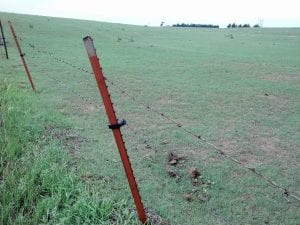Jason Warner, extension cow-calf specialist
For cow-calf producers that limit the length of the breeding season, the period of rest after removal from females is key for management of herd bulls. During this time, it is not uncommon for bulls to be observed less frequently and attention to them often falls, albeit unintended, to the bottom of the priority list. As with females, the time in between breeding seasons represents the opportunity to regain body condition and weight if needed, and this length of rest is certainly reduced when bulls are used in multiple breeding seasons. Continue reading “Supplementation Considerations for Bulls Following Breeding”
 As the forage in our pastures becomes more brown than green in appearance it is not uncommon to notice a few thin cows within the herd. As forage quality declines in late Summer/Fall it can be difficult for some cows to maintain body condition, especially young cows (first or second calf) or those with relatively high lactation potential. However, the best time to improve cow body condition on Spring-calving cows is post-weaning during the Fall.
As the forage in our pastures becomes more brown than green in appearance it is not uncommon to notice a few thin cows within the herd. As forage quality declines in late Summer/Fall it can be difficult for some cows to maintain body condition, especially young cows (first or second calf) or those with relatively high lactation potential. However, the best time to improve cow body condition on Spring-calving cows is post-weaning during the Fall.  For many producers in Kansas, the last couple of weeks have brought much needed rain to our rangeland and helped fill ponds on which we depend for watering livestock. Much of central and northeast Kansas received 2 – 10 inches of rain over the Labor Day weekend. Undoubtably, the rain was welcomed by many and does much to relieve the short surface water supplies. The spring and summer of 2018 will be remembered by many cattle producers due to the hot and dry conditions that persisted. The lack of rain resulted in subpar forage production for both cool and warm season grasslands. As a result, cattle producers will face a wide range of lingering effects of the drought over the coming months and perhaps years.
For many producers in Kansas, the last couple of weeks have brought much needed rain to our rangeland and helped fill ponds on which we depend for watering livestock. Much of central and northeast Kansas received 2 – 10 inches of rain over the Labor Day weekend. Undoubtably, the rain was welcomed by many and does much to relieve the short surface water supplies. The spring and summer of 2018 will be remembered by many cattle producers due to the hot and dry conditions that persisted. The lack of rain resulted in subpar forage production for both cool and warm season grasslands. As a result, cattle producers will face a wide range of lingering effects of the drought over the coming months and perhaps years.